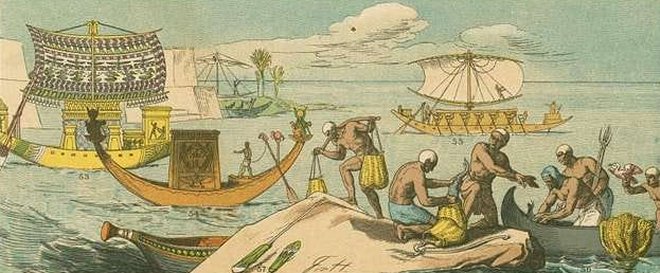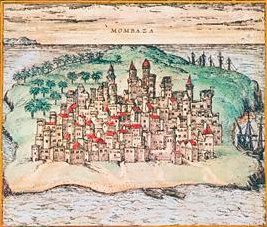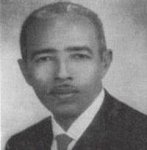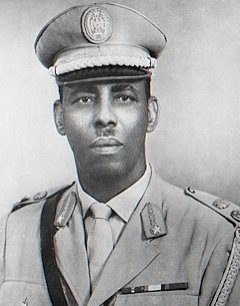|
With the arrival of Islam in the 7th century, the Somali coast transformed. A series of powerful city-states and sultanates emerged, ushering in a golden age of maritime trade that connected Africa, the Arabian Peninsula, India, and even China. Cities like Mogadishu, Merca, and Barawa became bustling cosmopolitan centres, renowned for their wealth, architecture, and scholarship. During this pre-colonial era, the Ajuran Sultanate (13th to 17th centuries) rose to prominence, controlling a vast territory in central and southern Somalia. The Ajuran were not just traders; they were master engineers who constructed an intricate network of limestone wells, cisterns, and canals to manage river water for agriculture. Their centralised government minted its own currency and maintained a powerful standing army that successfully defended its shores against Portuguese incursions in the 16th century. This period cemented Somalia’s identity as a prosperous and fiercely independent maritime nation. While modern-day Somalia first came to the attention of Europeans when the Portuguese discovered its coastal cities whilst developing trade routes to India. Explorer Pero da Covilhã landed at Zeila in 1487 and made his way to Ethiopia, where he was forced to marry and settle for the rest of his life. The late 19th century brought a dramatic shift. The British established their presence in the area by capturing Aden located in the southern part of modern-day Yemen in 1839 with the purpose of creating a secure coaling and supply port for ships traveling to and from India and to suppress piracy. Having done so, the British required sources of food for their new colony which were best found off the Somalia coast and inland. Indeed the area became known as 'Aden's butcher's shop' as securing food supplies appeared to be the sole interest of the British. By 1862, the French had started purchasing land in the area to support its coaling station at Obock after signing a deal with Afar leaders, and the Italians, under the auspices of the Rubattino Shipping Company, purchased land in modern day Eritrea from the local Sultan, establishing a base at Assab. The history of European engagement in Somalia and its environs was further bolstered by the opening of the Highway to India (Suez Canal) in November 1869. Another player in the area was Egypt, who, by 1875, held towns on the Somalia coastline and was moving into the interior of the country but this was of limited success and duration. This encroachment into the area, gathered pace with the "Scramble for Africa."
This division sowed the seeds of future conflict, but it did not go unchallenged. The most formidable resistance came from Sayyid Mohammed Abdullah Hassan (right), a poet, religious leader, and warrior whom the British nicknamed the "Mad Mullah." For two decades, he led the Dervish movement, a powerful armed struggle against British, Italian, and Ethiopian forces. Using guerrilla tactics and inspiring his followers with powerful poetry, Hassan established a Dervish state and became a symbol of Somali nationalism and anti-colonial resistance. However the Dervish State aligned itself with the Ottoman and German empire during the First World War and was defeated by the British in 1920 by the Royal Air Force's aerial bombardments, one of the first times air power was used to quell a colonial uprising in Africa. Hassan and his followers then fled to the Ogaden Desert in the hope of regrouping, however Hassan died later that year of influenza at the age of 64. |
Somalia History |
Somalia History |
Somalia History | Somalia History |
 |

|
Following the war, Italy, which had aligned itself with Britain, France and Russia from 1915, increased its military presence in the area and in 1925, following an agreement made during the war as a reward for Italy having joined the Allies, an area south of the Jubba River known as Jubaland ~ a 33,000 square mile area flanking north-east Kenya ~ was ceded by the British into Italian control becoming part of the Italian protectorate. From there the Italians launched the Second Italo-Abyssinian War in 1935 in part in retaliation by Mussolini for Italy's earlier heavy defeat at the hands of Ethiopia in 1896. The League of Nations watched on helplessly as Ethiopia was swiftly crushed, occupied and annexed into the newly created Italian East Africa comprised of Ethiopia, Italian Somaliland and Italian Eritrea with King Victor Emmanuel III of Italy taking the title of "Emperor of Abyssinia". After the outbreak of World War II, the Italians conquered British Somaliland also absorbing it into Italian East Africa, however a year later the British recaptured the territory and, following the war, Italian Somaliland came under British administration until 1949 after which it became the Trust Territory of Somalia administered by Italy but on a United Nations understanding and condition that it would become independent within ten years while British Somaliland remained a protectorate.
In the decades since, Somalia has been on a long, arduous path to recovery. The northern region of Somaliland declared independence and has maintained relative stability, though it remains internationally unrecognised. Puntland exists as a semi-autonomous state. The south has grappled with the rise of extremist groups like Al-Shabaab, but with the support of African Union forces, a fragile Federal Government has been established in Mogadishu. Today, Somalia’s story is one of incredible resilience. In cities like Mogadishu, reconstruction is underway, markets are bustling, and a vibrant diaspora is returning to invest and rebuild. |

 Later direct and official contact between Portugal and the Horn was established by Vasco da Gama during his expedition to reach India from Europe directly by sea however Mamluk Egypt and then the Ottoman Empire meant that they were hostile to the presence of the Portuguese in the region and in 1698, after decades of conflict, captured Fort Jesus at the Siege of Mombasa (left), marking the end of Portuguese political and commercial influence in the region.
Later direct and official contact between Portugal and the Horn was established by Vasco da Gama during his expedition to reach India from Europe directly by sea however Mamluk Egypt and then the Ottoman Empire meant that they were hostile to the presence of the Portuguese in the region and in 1698, after decades of conflict, captured Fort Jesus at the Siege of Mombasa (left), marking the end of Portuguese political and commercial influence in the region. Following the Berlin Conference, the British signed a number of "protectorate" treaties with Somali chiefs of the northern area in return for British protection and the area was effectively divided up by European powers without regard for existing communities or clan territories. Britain established British Somaliland in the north, Italy created Italian Somaliland in the south from land ceded by the Sultan of Zanzibar, and France consolidated modern day Djibouti. Meanwhile, neighbouring Ethiopia expanded into the Somali-inhabited Ogaden Desert region which was annexed by Emperor Menelik II of Ethiopia in 1891. Then in 1897 the border between British Somaliland and Ethiopia was formally defined by treaty with Melelik.
Following the Berlin Conference, the British signed a number of "protectorate" treaties with Somali chiefs of the northern area in return for British protection and the area was effectively divided up by European powers without regard for existing communities or clan territories. Britain established British Somaliland in the north, Italy created Italian Somaliland in the south from land ceded by the Sultan of Zanzibar, and France consolidated modern day Djibouti. Meanwhile, neighbouring Ethiopia expanded into the Somali-inhabited Ogaden Desert region which was annexed by Emperor Menelik II of Ethiopia in 1891. Then in 1897 the border between British Somaliland and Ethiopia was formally defined by treaty with Melelik.



 With a tide of nationalism sweeping across Africa in the decades after the Second World War, that dream was realised in 1960 when the Trust Territory of Somalia duly became independent of Italy and, together with British Somaliland, united to become the Somali Democratic Republic, with Mogadishu as its capital and Aden Abdullah Osman Daar (left), a well known nationalist, as its first president. The early years were filled with democratic optimism and a powerful sense of national identity, fuelled by the vision of "Greater Somalia" - the idea of uniting all Somali-inhabited territories in the Horn of Africa. However, this fledgling democracy was plagued by political infighting, corruption, and clan-based factionalism. Daar lost the subsequent 1967 presidential election to his former prime minister Abdirashid Ali Shermarke however two years later Shermarke was assassinated and the coup installed military commander Major General Mohamed Siad Barre as president. Barre (below) established a socialist state, imposing a new Latin script for the Somali language and launched a successful mass literacy campaign. For a time, his regime suppressed clan identity in favour of a singular national consciousness.
With a tide of nationalism sweeping across Africa in the decades after the Second World War, that dream was realised in 1960 when the Trust Territory of Somalia duly became independent of Italy and, together with British Somaliland, united to become the Somali Democratic Republic, with Mogadishu as its capital and Aden Abdullah Osman Daar (left), a well known nationalist, as its first president. The early years were filled with democratic optimism and a powerful sense of national identity, fuelled by the vision of "Greater Somalia" - the idea of uniting all Somali-inhabited territories in the Horn of Africa. However, this fledgling democracy was plagued by political infighting, corruption, and clan-based factionalism. Daar lost the subsequent 1967 presidential election to his former prime minister Abdirashid Ali Shermarke however two years later Shermarke was assassinated and the coup installed military commander Major General Mohamed Siad Barre as president. Barre (below) established a socialist state, imposing a new Latin script for the Somali language and launched a successful mass literacy campaign. For a time, his regime suppressed clan identity in favour of a singular national consciousness. However, his rule grew increasingly authoritarian and oppressive. The dream of Greater Somalia led to the disastrous Ogaden War (1977-1978) against Ethiopia (below - left), which Somalia lost decisively. The defeat crippled the military, created a massive refugee crisis, and shattered national morale. Barre’s regime clung to power by favouring his own clan, but this just created further resentment, sparking armed opposition movements across the country. In 1991, rebel forces overthrew Barre, but instead of ushering in a new era of peace, his ousting created a power vacuum and the country descended into a devastating civil war as rival warlords and clan militias fought for control. The central government collapsed entirely, leading to famine and immense human suffering.
However, his rule grew increasingly authoritarian and oppressive. The dream of Greater Somalia led to the disastrous Ogaden War (1977-1978) against Ethiopia (below - left), which Somalia lost decisively. The defeat crippled the military, created a massive refugee crisis, and shattered national morale. Barre’s regime clung to power by favouring his own clan, but this just created further resentment, sparking armed opposition movements across the country. In 1991, rebel forces overthrew Barre, but instead of ushering in a new era of peace, his ousting created a power vacuum and the country descended into a devastating civil war as rival warlords and clan militias fought for control. The central government collapsed entirely, leading to famine and immense human suffering.


